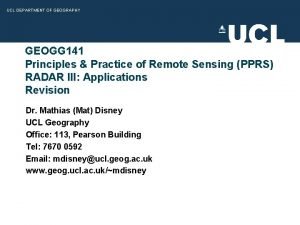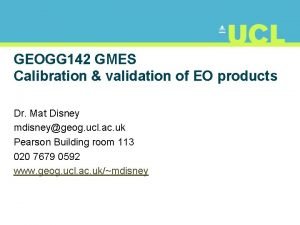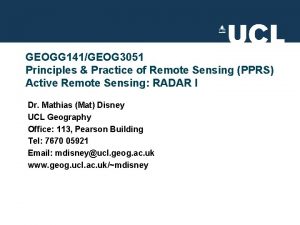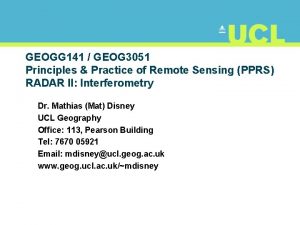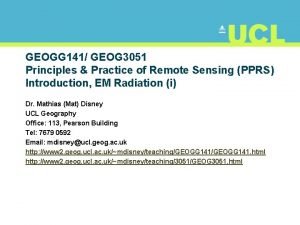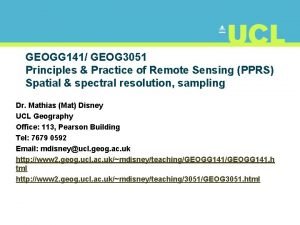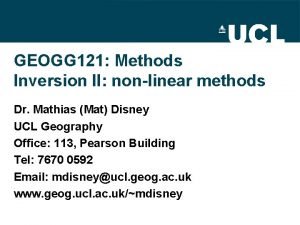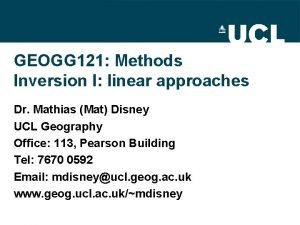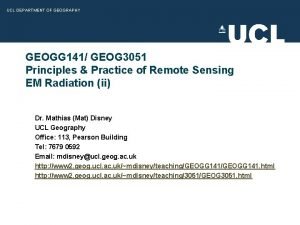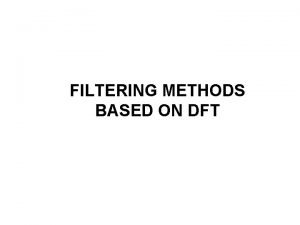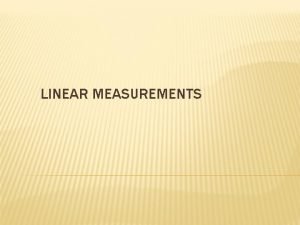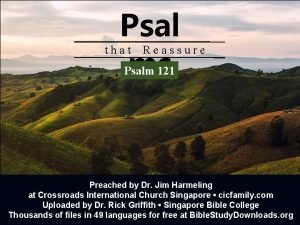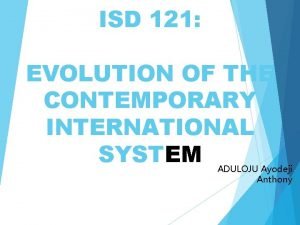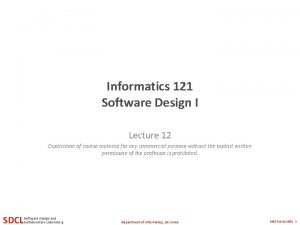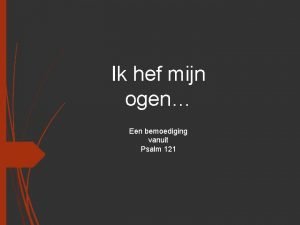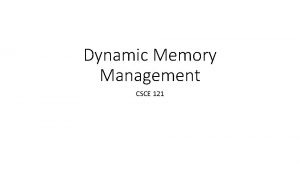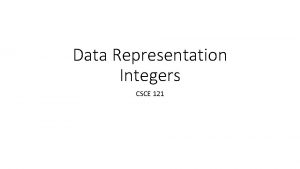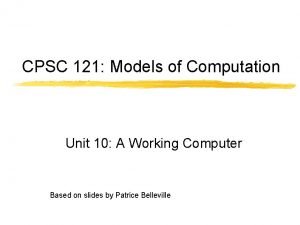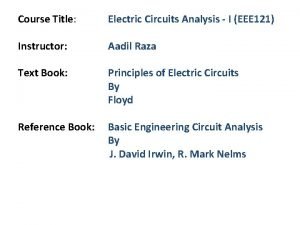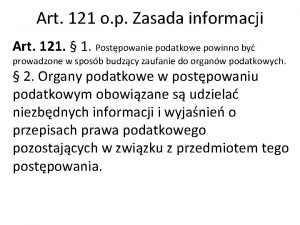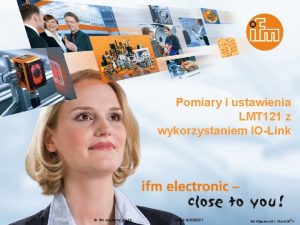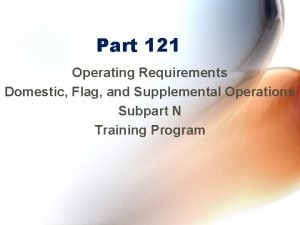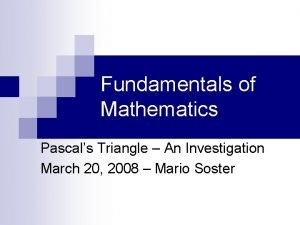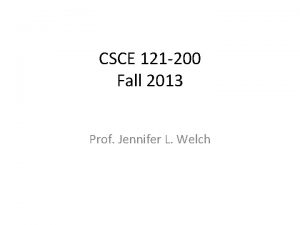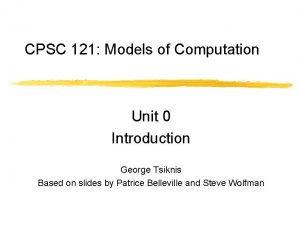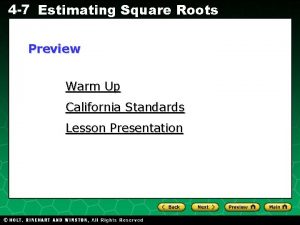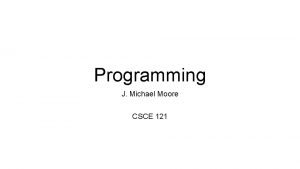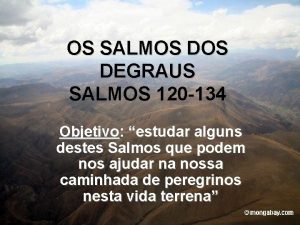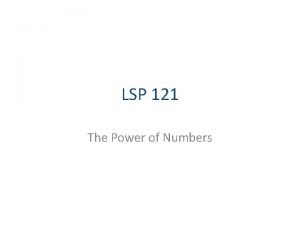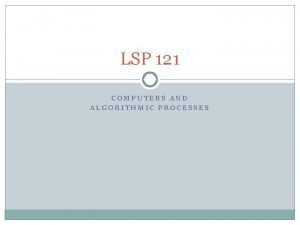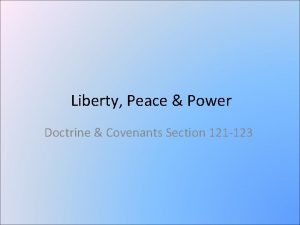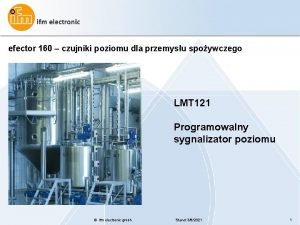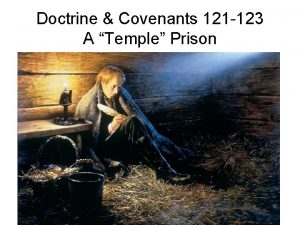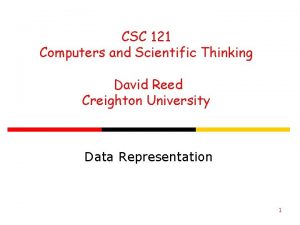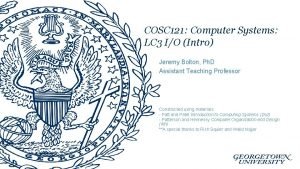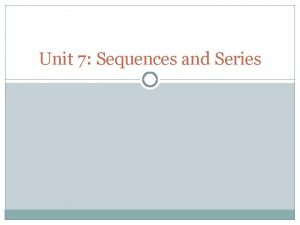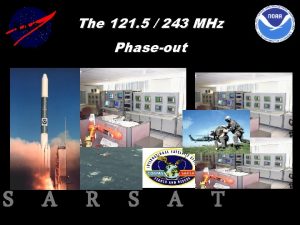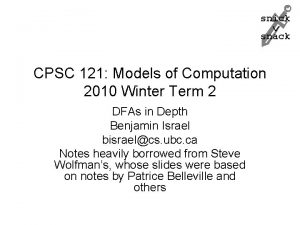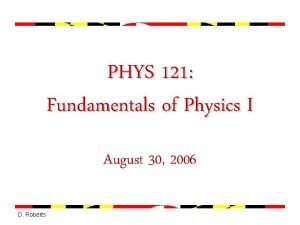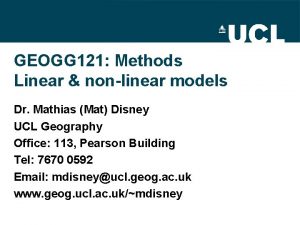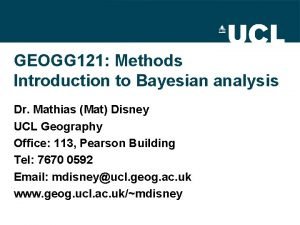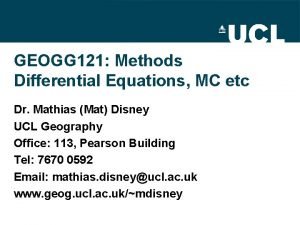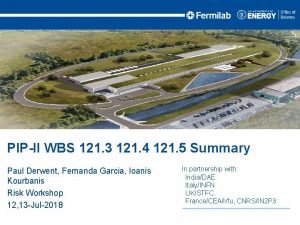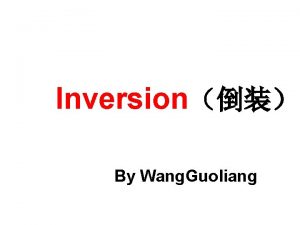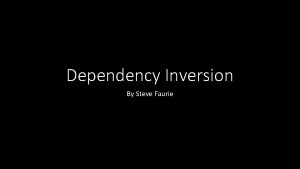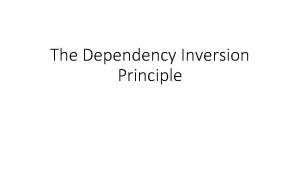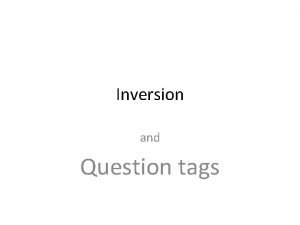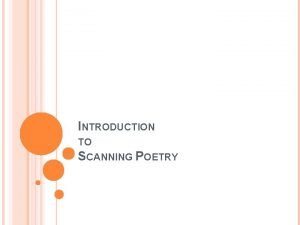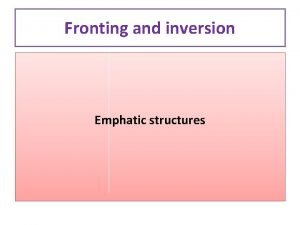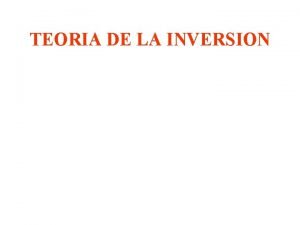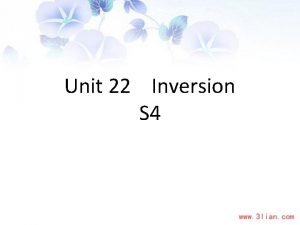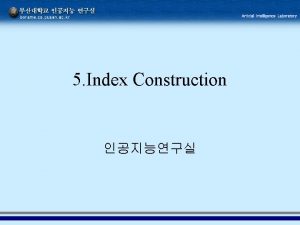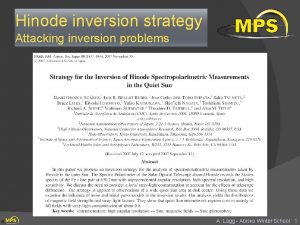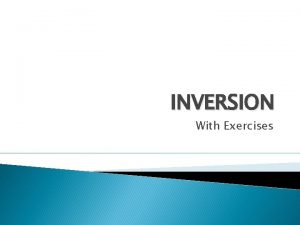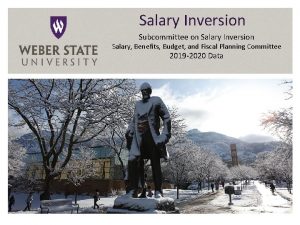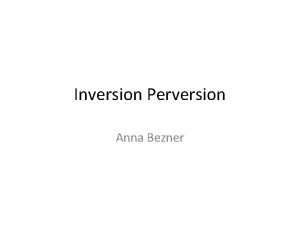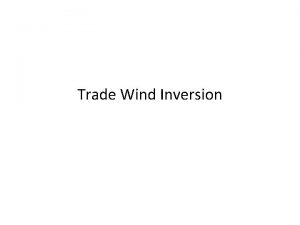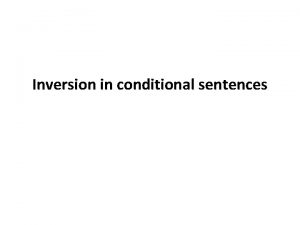GEOGG 121 Methods Inversion I linear approaches Dr
























































- Slides: 56

GEOGG 121: Methods Inversion I: linear approaches Dr. Mathias (Mat) Disney UCL Geography Office: 113, Pearson Building Tel: 7670 0592 Email: mdisney@ucl. geog. ac. uk www. geog. ucl. ac. uk/~mdisney

Lecture outline • Linear models and inversion – Least squares revisited, examples – Parameter estimation, uncertainty – Practical examples • Spectral linear mixture models • Kernel-driven BRDF models and change detection

Reading • Linear models and inversion – Linear modelling notes: Lewis, 2010 – Chapter 2 of Press et al. (1992) Numerical Recipes in C (online version http: //apps. nrbook. com/c/index. html) – http: //en. wikipedia. org/wiki/Linear_model – http: //en. wikipedia. org/wiki/System_of_linear_equations

Linear Models • For some set of independent variables x = {x 0, x 1, x 2, … , xn} have a model of a dependent variable y which can be expressed as a linear combination of the independent variables.

Linear Models?

Linear Mixture Modelling • Spectral mixture modelling: – Proportionate mixture of (n) end-member spectra – First-order model: no interactions between components

Linear Mixture Modelling • r = {rl 0, rl 1, … rlm, 1. 0} – Measured reflectance spectrum (m wavelengths) • nx(m+1) matrix:

Linear Mixture Modelling • n=(m+1) – square matrix • Eg n=2 (wavebands), m=2 (end-members)

r 2 Reflectance Band 2 r r 3 r 1 Reflectance Band 1

Linear Mixture Modelling • • as described, is not robust to error in measurement or end-member spectra; Proportions must be constrained to lie in the interval (0, 1) – • • - effectively a convex hull constraint; m+1 end-member spectra can be considered; needs prior definition of end-member spectra; cannot directly take into account any variation in component reflectances – e. g. due to topographic effects

Linear Mixture Modelling in the presence of Noise • Define residual vector • minimise the sum of the squares of the error e, i. e. Method of Least Squares (MLS)

Error Minimisation • Set (partial) derivatives to zero

Error Minimisation • Can write as: Solve for P by matrix inversion

e. g. Linear Regression

RMSE

y x 2 x x 1 x

Weight of Determination (1/w) • Calculate uncertainty at y(x)

RMSE P 1 P 0

RMSE P 1 P 0

Issues • • Parameter transformation and bounding Weighting of the error function Using additional information Scaling

Parameter transformation and bounding • Issue of variable sensitivity – E. g. saturation of LAI effects – Reduce by transformation • Approximately linearise parameters • Need to consider ‘average’ effects


Weighting of the error function • Different wavelengths/angles have different sensitivity to parameters • Previously, weighted all equally – Equivalent to assuming ‘noise’ equal for all observations

Weighting of the error function • Can ‘target’ sensitivity – E. g. to chlorophyll concentration – Use derivative weighting (Privette 1994)

Using additional information • Typically, for Vegetation, use canopy growth model – See Moulin et al. (1998) • Provides expectation of (e. g. ) LAI – Need: • planting date • Daily mean temperature • Varietal information (? ) • Use in various ways – Reduce parameter search space – Expectations of coupling between parameters

Scaling • Many parameters scale approximately linearly – E. g. cover, albedo, f. APAR • Many do not – E. g. LAI • Need to (at least) understand impact of scaling

Crop Mosaic LAI 1 LAI 4 LAI 0

L A I 1 Crop Mosaic • 20% of LAI 0, 40% LAI 4, 40% LAI 1. • ‘real’ total value of LAI: – 0. 2 x 0+0. 4 x 4+0. 4 x 1=2. 0. visible: NIR L A I 4 L A I 0

canopy reflectance over the pixel is 0. 15 and 0. 60 for the NIR. • If assume the model above, this equates to an LAI of 1. 4. • ‘real’ answer LAI 2. 0

Linear Kernel-driven Modelling of Canopy Reflectance • Semi-empirical models to deal with BRDF effects – Originally due to Roujean et al (1992) – Also Wanner et al (1995) – Practical use in MODIS products • BRDF effects from wide FOV sensors – MODIS, AVHRR, VEGETATION, MERIS

Satellite, Day 1 Satellite, Day 2 X

AVHRR NDVI over Hapex-Sahel, 1992

Linear BRDF Model • of form: Model parameters: Isotropic Volumetric Geometric-Optics

Linear BRDF Model • of form: Model Kernels: Volumetric Geometric-Optics

Volumetric Scattering • Develop from RT theory – – Spherical LAD Lambertian soil Leaf reflectance = transmittance First order scattering • Multiple scattering assumed isotropic

Volumetric Scattering • If LAI small:

Volumetric Scattering • Write as: Ross. Thin kernel Similar approach for Ross. Thick

Geometric Optics • Consider shadowing/protrusion from spheroid on stick (Li-Strahler 1985)

Geometric Optics • Assume ground and crown brightness equal • Fix ‘shape’ parameters • Linearised model – Li. Sparse – Li. Dense

Kernels Retro reflection (‘hot spot’) Volumetric (Ross. Thick) and Geometric (Li. Sparse) kernels for viewing angle of 45 degrees

Kernel Models • Consider proportionate (a) mixture of two scattering effects

Using Linear BRDF Models for angular normalisation • Account for BRDF variation • Absolutely vital for compositing samples over time (w. different view/sun angles) • BUT BRDF is source of info. too! MODIS NBAR (Nadir-BRDF Adjusted Reflectance MOD 43, MCD 43) http: //www-modis. bu. edu/brdf/userguide/intro. html

MODIS NBAR (Nadir-BRDF Adjusted Reflectance MOD 43, MCD 43) http: //www-modis. bu. edu/brdf/userguide/intro. html

BRDF Normalisation • Fit observations to model • Output predicted reflectance at standardised angles – E. g. nadir reflectance, nadir illumination • Typically not stable – E. g. nadir reflectance, SZA at local mean And uncertainty via

Linear BRDF Models to track change • Examine change due to burn (MODIS) 220 days of Terra (blue) and Aqua (red) sampling over point in Australia, w. sza (T: orange; A: cyan). Time series of NIR samples from above sampling FROM: http: //modis-fire. umd. edu/Documents/atbd_mod 14. pdf

MODIS Channel 5 Observation DOY 275

MODIS Channel 5 Observation DOY 277

Detect Change • Need to model BRDF effects • Define measure of dis-association

MODIS Channel 5 Prediction DOY 277

MODIS Channel 5 Discrepency DOY 277

MODIS Channel 5 Observation DOY 275

MODIS Channel 5 Prediction DOY 277

MODIS Channel 5 Observation DOY 277

So BRDF source of info, not JUST noise! • Use model expectation of angular reflectance behaviour to identify subtle changes Dr. Lisa Maria Rebelo, IWMI, CGIAR. 54

Detect Change • Burns are: – negative change in Channel 5 – Of ‘long’ (week’) duration • Other changes picked up – – E. g. clouds, cloud shadow Shorter duration or positive change (in all channels) or negative change in all channels

Day of burn http: //modis-fire. umd. edu/Burned_Area_Products. html Roy et al. (2005) Prototyping a global algorithm for systematic fire-affected area mapping using MODIS time series data, RSE 97, 137 -162.
 Geogg
Geogg Transport models
Transport models Geogg
Geogg Geogg
Geogg Geogg
Geogg Geogg
Geogg Geogg
Geogg Geogg
Geogg Geogg
Geogg Geogg
Geogg Direct/expository approach
Direct/expository approach Direct and indirect wax pattern
Direct and indirect wax pattern Dft performs filtering operation in
Dft performs filtering operation in Linear index
Linear index Direct methods for sparse linear systems
Direct methods for sparse linear systems Linear programming models: graphical and computer methods
Linear programming models: graphical and computer methods Psalm 121:1-3
Psalm 121:1-3 Psal 121
Psal 121 Ifm lmt 121
Ifm lmt 121 Psalm 121 esv
Psalm 121 esv Isd-121
Isd-121 Inf 121 uci
Inf 121 uci Ik hef mijn ogen op naar de bergen psalm 121
Ik hef mijn ogen op naar de bergen psalm 121 Phy 131 asu
Phy 131 asu Subprograma 121
Subprograma 121 Csce 121 tamu
Csce 121 tamu 121 to binary
121 to binary Cpsc 121
Cpsc 121 Eee 121
Eee 121 Dr junaid ahmed
Dr junaid ahmed Art. 121 op
Art. 121 op Realidades 2 capitulo 3b ahora mismo
Realidades 2 capitulo 3b ahora mismo Lmt 121
Lmt 121 Rva33.121
Rva33.121 Part 121 alternate requirements
Part 121 alternate requirements Triangle 1 11 121
Triangle 1 11 121 Csce 121
Csce 121 Cpsc 121
Cpsc 121 Cpsc 121
Cpsc 121 Evaluate 144/121
Evaluate 144/121 Csce 121 tamu
Csce 121 tamu Salmos 120 a 134
Salmos 120 a 134 Odmocnina z 13
Odmocnina z 13 Ordinal numbers 121
Ordinal numbers 121 121 computers
121 computers Doctrine and covenants section 121
Doctrine and covenants section 121 Lmt 110
Lmt 110 Doctrine and covenants 121-123
Doctrine and covenants 121-123 Types of context clues
Types of context clues Csc 121
Csc 121 Cosc 121
Cosc 121 Geometric progression formula
Geometric progression formula Ed law 2d part 121
Ed law 2d part 121 121,5 mhz
121,5 mhz Cpsc 121 ubc
Cpsc 121 ubc Psalm 121 psalm 23
Psalm 121 psalm 23 Phys 121 umd
Phys 121 umd
